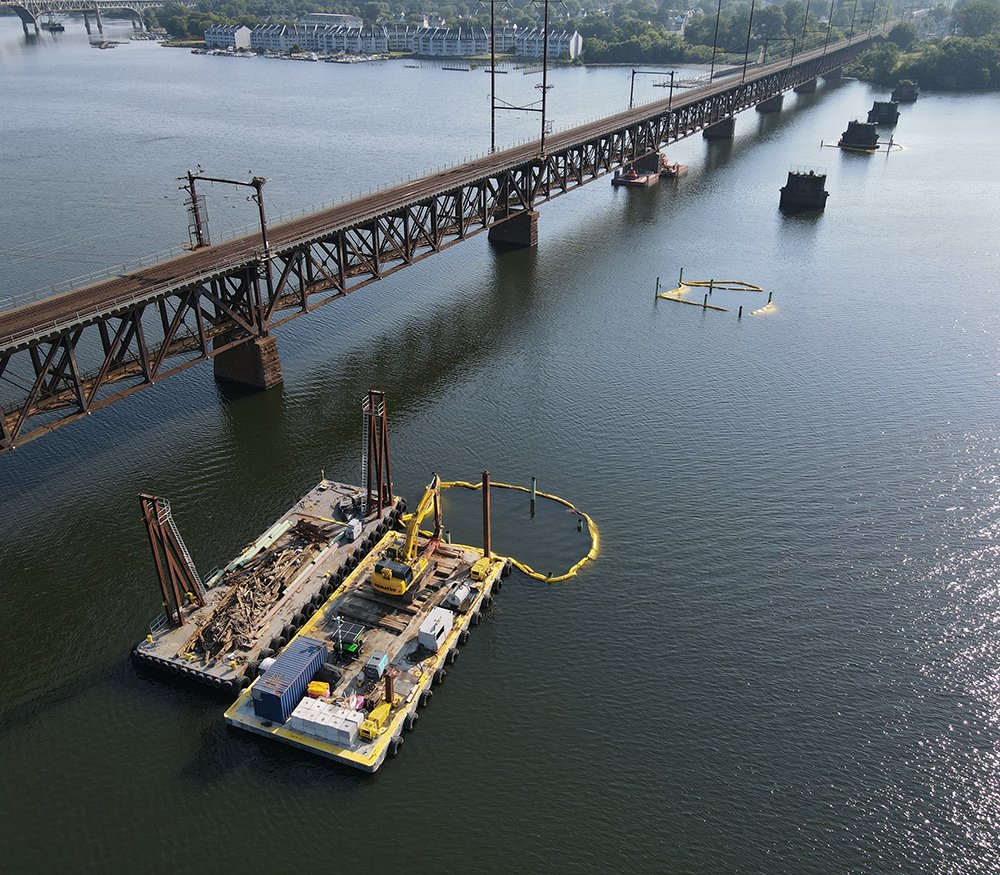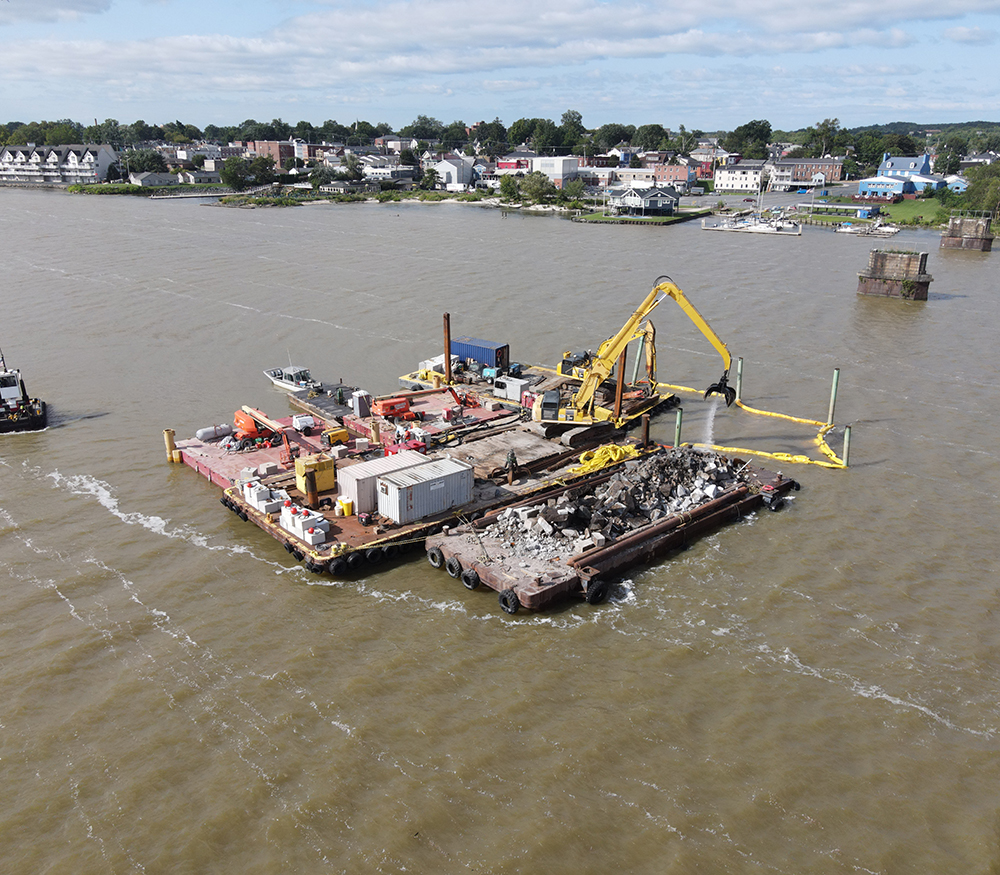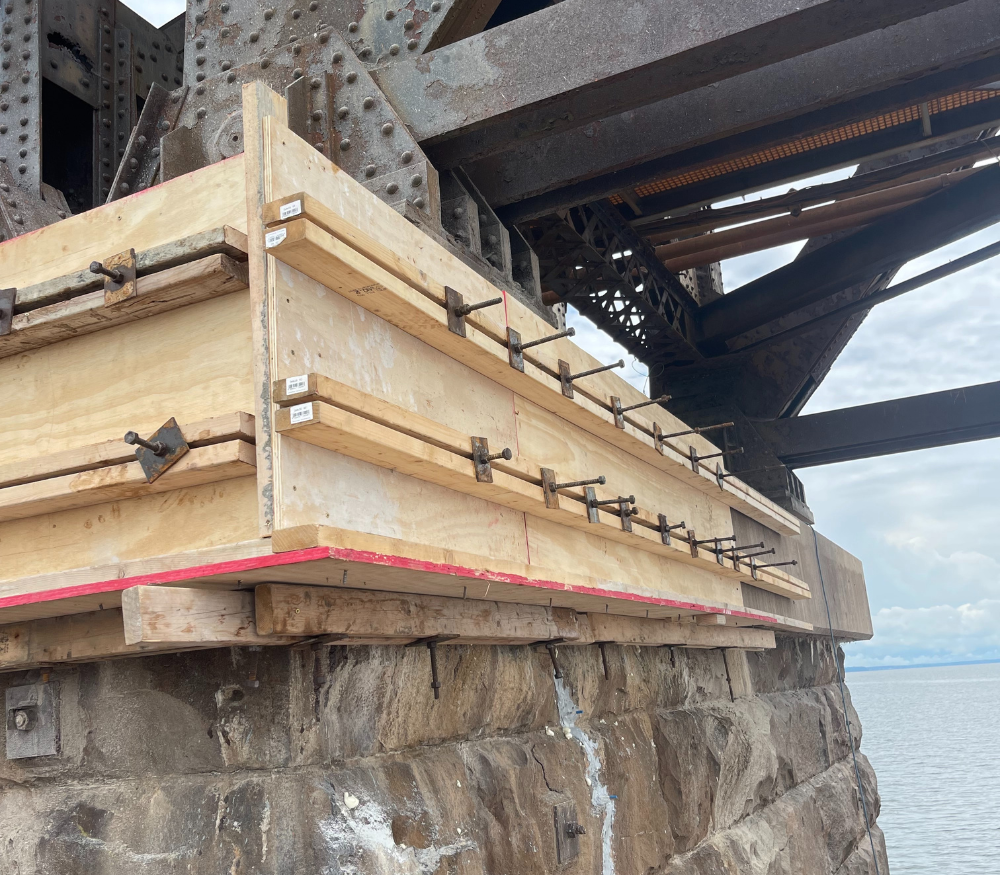Susquehanna River Rail Bridge Project - Remnant Bridge Piers
Perryville and Havre de Grace, MD
| Location: | Perryville and Havre de Grace, MD |
| Owner: | Amtrak |
| Construction Company: | Fay, S&B USA Construction |
| Project Status: | Completed in November 2024 |
This project by Fay, S&B USA Construction (Fay) demolished 10 remnant bridge piers located on the southeast side of the existing Susquehanna River Bridge to enable a larger Amtrak construction project that will build two new, high-speed rail bridges along the Northeast Corridor, one of the busiest passenger rail corridors in the US. The client also engaged Fay to perform repairs on four piers of an adjacent railroad bridge, which is still in service.
Clearing the Path for Future High-Speed Rail Infrastructure
Project Highlights
- Demolished 10 remnant piers that once supported an 1866 railroad bridge crossing the Susquehanna River
- Each pier was a solid shaft structure approximately 24 ft long by 8 ft wide and rising approximately 20 ft above the waterline
- Removed piers to a depth of 2 feet below grade or mud line; where the bedrock is 2 feet or less below the mudline, removed the remnant bridge piers to the bedrock elevation
- Utilized turbidity curtains to contain the 3,000 cy of demolition material, which reduced work time and the project cost
- Complied with wildlife time-of-year (TOY) restriction requiring demolition to be performed between June 15 – October 31
- Installed bird deterrent netting system to deter wildlife from residing on the piers before demolition started
- Performed repairs to 4 piers of the adjacent railroad bridge
Fay began the demolition work in February 2024 and finished this critical package in November 2024—on schedule and with zero safety incidents or lost time. Fay’s scope of work included the demolition of 10 remnant bridge piers located on the southeast side of the existing Susquehanna River Bridge. The piers were built to support an 1866 railroad bridge, whose superstructure had been removed several decades earlier. The solid shaft piers were approximately 20 ft above the waterline and approximately 24 ft long by 8 ft wide.
Removing the remnant piers mitigated a serious potential safety hazard for boaters on the Susquehanna River and cleared the path for future infrastructure development. According to Amtrak, the federal environmental review process identified the removal of the remnant bridge piers as a necessary step toward building a new and improved railroad bridge replacement that will enable top passenger train speeds of 160 mph, while also improving safety and navigation on the river.
Fay also helped Amtrak salvage original stones from several piers, including one block engraved with the date 1877 (commemorating later upgrades to the 1866 structure). Amtrak donated the stones to the City of Havre de Grace and the Town of Perryville at each end of the bridge.
Construction
Working from barges, Fay demolished all 10 solid-shaft remanent piers using turbidity curtains to contain debris—which amounted to a total of 3,000 cy of material—to reduce demolition time and cost. Fay utilized a top-down removal method of the existing piers to ensure the debris was sized properly for removal from the river bottom during clamming operations to avoid damaging the turbidity curtains. All demolition and clean up complied with state and federally regulated time-of-year restrictions to protect aquatic plants and wildlife.Prior to the debris removal process, the project team completed a hydrographic survey to document existing conditions of the piers and the adjacent river. The survey was submitted to Amtrak as a record of the subsurface conditions at the time. Additionally, the team installed bird deterrent nets on the piers to prevent disruption of nesting by migratory species, fulfilling an important commitment Amtrak made during the environmental review process.
Fay used multiple barge-mounted excavators equipped with hydraulic impact breakers and clamshell buckets to perform the demolition and remove the pier material from the river. Upon the completion of the demolition efforts, a final river bottom hydrographic survey was conducted and submitted to Amtrak for acceptance of final conditions.
During this project, Amtrak also engaged Fay to perform repairs on the railroad bridge located beside the demolition site and still in active service. Repairs to the four stone and concrete piers included capstone stabilization, pier cap repair, pier restraint, masonry repointing, crack repair and epoxy waterproofing.




